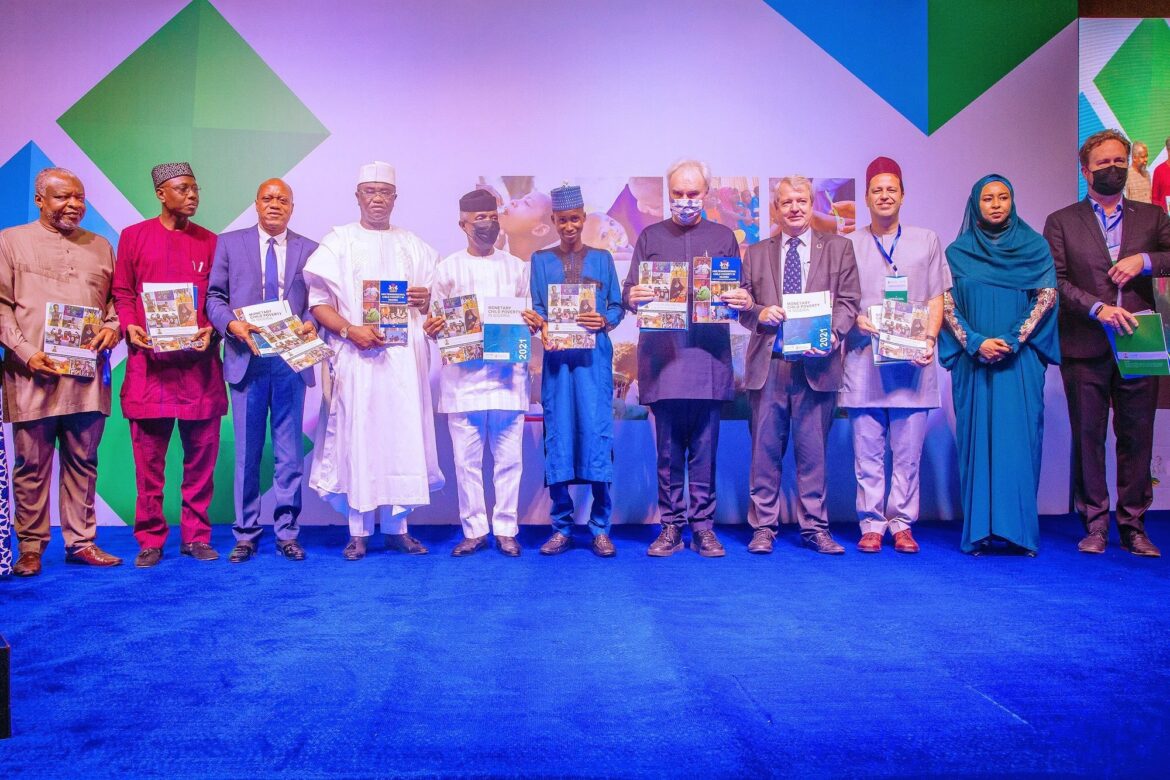By Zayamu Hassan
Nigeria needs roughly N1 trillion to lift children out of poverty, reports launched by the Vice President, Professor Yemi Osinbajo
The reports were prepared by the Ministry of Budget and National Planning in collaboration with the United Nations Children’s Fund (UNICEF).
The three reports are launched side by side by Vice President Prof. Yemi Osinbajo includes; Situation Analysis of Children in Nigeria, the Multi-dimensional Child Poverty Analysis in Nigeria and Monetary Child Poverty in Nigeria.
The Situation Analysis indicates that child poverty rate is highest among children aged 16– 17 years and least among children aged 0–5 years.
It notes that children are most affected by poverty because they are vulnerable, and that poverty has long-term impacts on the well-being of children, even into adulthood.
The Multidimensional Child Poverty Analysis using Multidimensional Overlapping Deprivation Analysis approach reveals that approximately 54 per cent of children in Nigeria are multi-dimensionally poor by facing at least three deprivations across seven dimensions of child rights including nutrition, healthcare, education, water, sanitation, adequate housing, and information.
Multidimensional poverty in children is more prevalent in the rural (65.7 %) than urban areas (28.4 %). There are also high state disparities ranging from 14.5 % (Lagos) to 81.5 % (Sokoto).
The monetary child poverty report shows that 47.4 % of children face monetary poverty by living in households with expenditure less than N 376.5 a day – national poverty line.
Slight differences are observed between boys (47.98 %) and girls (46.8 %) while there are high geographical and state disparities (from 6.5% in Lagos to 91.4% in Sokoto).
In Nigeria, according to the report 24.56% of children face extreme poverty by living in households that spend less than $1.90 a day.
Reacting to the report, the UNICEF Representative in Nigeria, Peter Hawkins, said: “Data is critical for effective budgeting and decision making – and the data from these surveys together paint a picture of the situation for children and families in Nigeria.
“We still have a long way to go towards ensuring the well-being of children and families in Nigeria, with persistent multi-dimensional poverty being a crucial obstacle.
“The findings of these reports will help guide the federal and state governments as they plan their budgets – providing evidence for where more funds need to be allocated and wisely spent.”
An analysis of the reports indicates the need for improved social protection measures to ensure that children are protected from risks, along with an expansion of access to much-needed social services.
Whether looking at poverty from a monetary or non-monetary point of view, the data show that children are more likely to live in poverty than other groups.
“It is clear that we need to pay special attention to planning and programming for children, based on the policy recommendations and calls to action contained in the reports.
“The data they provide offer a clear direction and key actions necessary for the realization of children’s rights in Nigeria,” Peter Hawkins noted.




